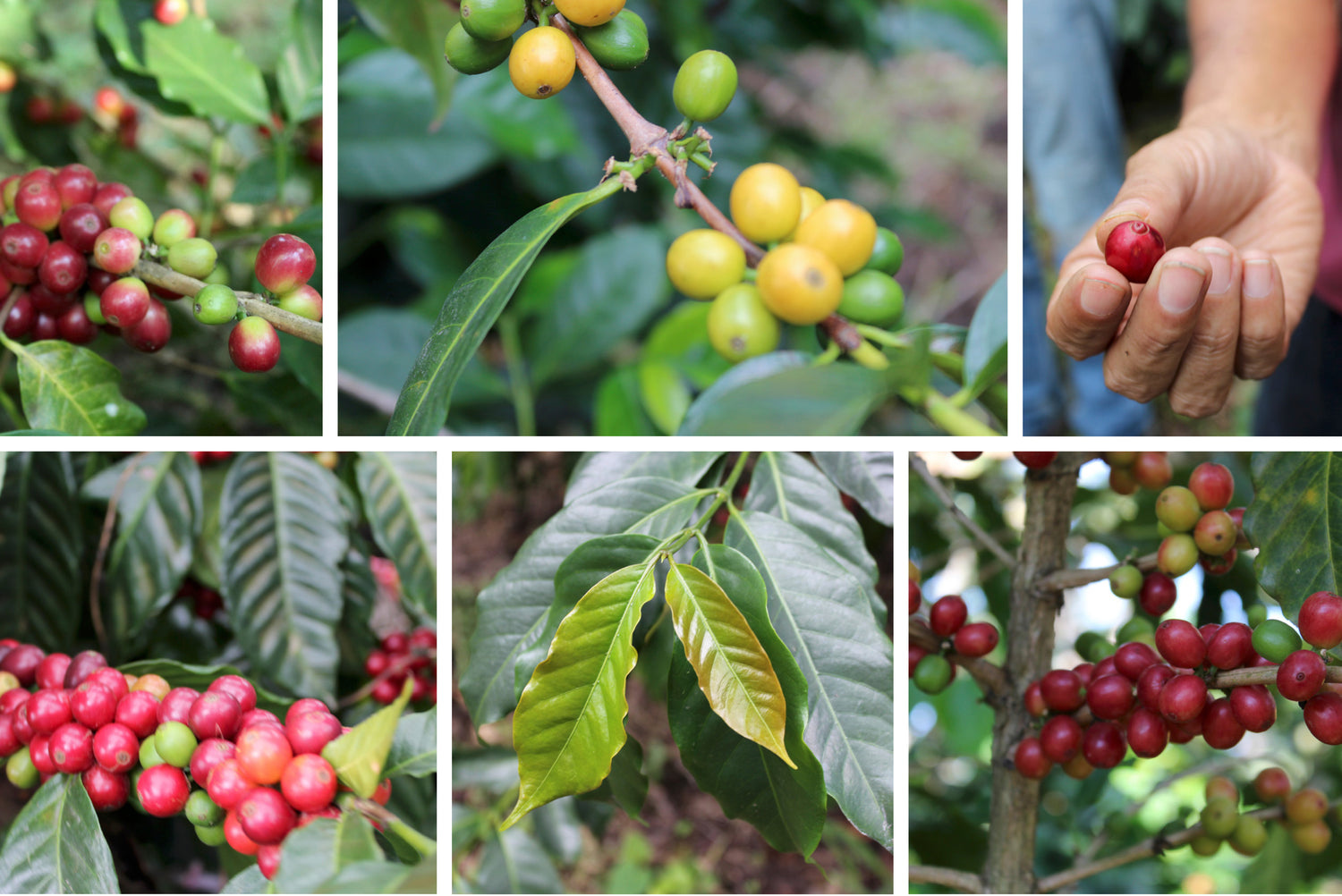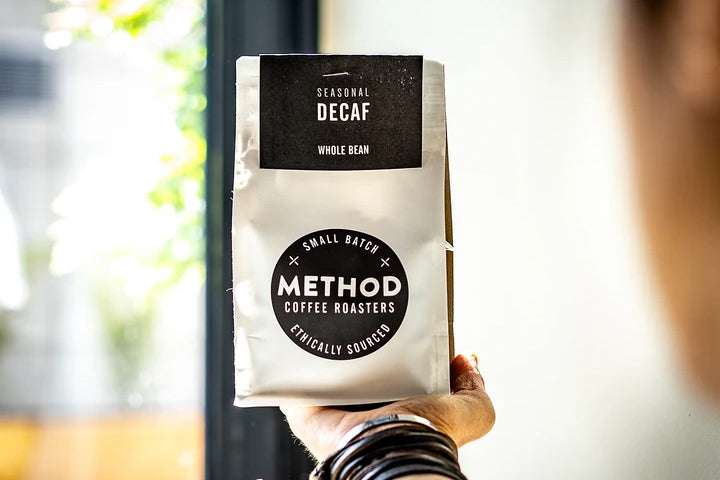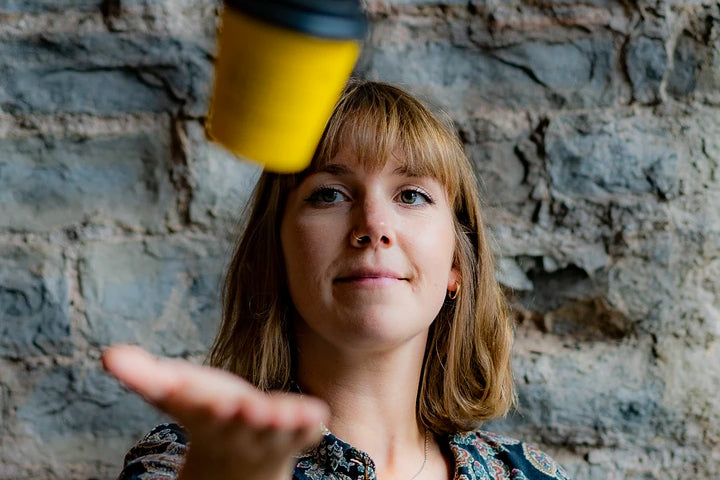Coffee Varieties
As speciality roasters we have a varied and carefully picked menu; the aim is to reflect the incredible range of flavours that coffee can present throughout the year and to satisfy the different preferences of our coffee drinkers.
Sourcing seasonally ensures fresh-crop coffees that will display the brightest and best flavours possible, with traceability and quality a must.
Putting together a good menu means selecting the best lots from a range of origins; remembering that within producer countries there can be distinct flavour profiles in different regions. Our menu also showcases different processing methods, these can add particular characteristics to the cup too.

Earlier this month we released a very special coffee, sourced and prepared for us by our friends at Primavera, in Guatemala. Readers of this blog will know that Guatemala is an origin that we absolutely love, so what’s the story with this particular selection?
The coffee in question is a honey processed lot; from a farm called El Hato, in Fraijanes. We visited this farm in February 2019 and saw for ourselves just how much care and attention they put into their work.
A few years ago the farm had some problems with Roja (coffee leaf rust), causing them to lose around 60% of their coffee trees. They met this challenge by re-planting with a more diverse range of varieties, including a small number of geisha plants. We were intrigued and asked that they send us sample the following year when the first harvest would be ready.
The coffee from El Hato arrived last month and in some ways one of the remarkable things about the coffee is the variety - it’s the first time we’ve ever bought a coffee grown from a geisha plant. For those who know, it’s fair to say the geisha variety has quite a reputation! Why and how can a variety be so important?
Coffee varieties are sometimes compared to the different types of grape we see in wine. A wine sommelier is able to differentiate between the different types of grape and the resulting flavour, as well as the range in wine origins. In the same way that Sauvignon, Riesling and Chardonnay may influence a wine’s flavour through sweetness, flavour or body the variety of a coffee can be equally influential.
This post explores some of the coffee varieties you may see on our men and the influence they can have on flavour.

Arabica coffee / Coffea Arabica
Arabica was first discovered growing in Ethiopia, around the 10th century. The plant discovered at the time is now referred to as ‘Typica’. Typica is responsible for several thousand other varieties, all of which have either occurred through natural mutation, or cultivation through cross breeding programmes, usually in an effort to increase genetic diversity.
Typica
It is acknowledged that this variety is responsible for the development of all other varieties, either through genetic mutation or cross breeding. It was the original varietal discovered in Ethiopia and spread to other producing regions when coffee was first commercialised by the Dutch. The leaves are thin and copper coloured and the plant produces elongated oval-shaped beans. Coffees from a Typica plant often have outstanding sweetness and complexity, though they are relatively low yielding compared to other varietals.
Bourbon
This varietal originated on the Island of Bourbon (now known as Reunion Island) and is a mutation of early Arabica species from Ethiopia. It yields slightly more coffee than the Typica varietal but is still relatively low yielding. The leaves are broad and cherries can ripen red, yellow or orange. We love bourbon coffee for its amazing complex acidity and great balance - a great component in espresso; either as a single or part of a blend.

Heirloom
These varieties are most commonly found in Ethiopia and they closely resemble the Typica varietal though there is no exact way of tracing their exact development.
There are over 1000 different heirloom varieties growing in the wild forests of Ethiopia and the first steps to separating them into lots are underway. These varieties are responsible for some of the most coveted cup profiles in the world – florals, citrus, cocoa, tea, wild berries…
Mundo Novo
This varietal originated in Brazil in the 1940’s and is a natural hybrid of Typica and Bourbon. It is high yielding, more resistant to disease and can be planted densely. The cherries are large and rounded and the beans display sweet characteristics with low acidity and a thick mouthfeel. Mundo Novo is most successfully cultivated in the lower producing regions of Brazil at altitudes of between 1000 and 1200 metres above sea level.
Caturra
Caturra is a mutation of Bourbon and another variety from Brazil. The tree will not reach the same height as Bourbon and is sometimes referred to as a semi-dwarf plant, making it much easier to hand pick the ripe cherries. It is particularly popular in Central America and Colombia and the cherries can ripen with either red or yellow pigmentation. Typical characteristics associated with this varietal are bright acidity and medium body. Caturra has a slightly higher yield than bourbon.

Catuai
This varietal is a hybrid of Mundo Novo and Caturra; it’s highly resistant to natural elements that coffee trees face at higher altitudes. Originally cultivated in Brazil, Catuai is now widely planted throughout Central America. Both the red and yellow strains demonstrate high acidity.
Maragogype
This is probably one of the most easily recognised varietals due to the unusually large size of bean which are sometimes referred to as ‘elephant beans’. A mutation of Typica it was first discovered in Brazil. Maragogype is relatively low yielding but is often desirable due to its distinguishing size. The cherries usually ripen red and can have enhanced sweetness.
Pacas
Named after the Pacas Family who first discovered it on their farm in El Salvador in 1949; a natural mutation of Bourbon and very similar in cup profile, it is often a shorter tree making it easier to harvest.
Pacamara
Pacamara is a hybrid of the Pacas and Maragogype varietals. This variety is thought to have been developed in El Salvador around 1958. The beans and leaves are very large and are well suited to higher altitudes. A very complex varietal producing beautiful floral notes with great balance. Unfortunately a very low yielding plant and quite susceptible to disease. A tricky coffee to roast too!
Geisha
Geisha found global fame following a discovery made by the Peterson family in 2004, on their farm Hacienda La Esmeralda, in Boquete, Panama. The Petersons noted particular characteristics from a specific set of trees during their daily cupping sessions throughout the harvest and decided to enter a lot into that year’s ‘Taste of Panama’ coffee competition.
The Geisha lot took first place and in fact completely blew the judges away, achieving record breaking prices from auction buyers. It is for this reason that this varietal is so closely associated with Panama. The origins of the varietal have been debated and contested but it’s thought to have originated in the town ‘Gesha’ in Western Ethiopia. The Geisha varietal is incredibly temperamental and low yielding, but it produces the most astonishing cup profile with distinct floral aromatics and outstanding sweetness. Flavours of rosewater, orange blossom, jasmine and apricot are often found in a Panama Geisha and the price tends to really reflect the quality with just 250G fetching as much as £100!
SL28
Created in the 1930s by the Scott Laboratories, as botanists searched for different mutations of Bourbon and Typica. SL28 has copper coloured leaves and its beans are fairly broad. It is native to Kenya and relatively low yielding, however the cup qualities are highly sought after. Typical characteristics include intense lemon acidity, great sweetness, balance and complexity.

SL34
SL34 was also created in the 1930s as a mutation between Bourbon and Typica. It differs to SL28 as it has bronze tipped leaves, perhaps hinting at a greater similarity to the Typica varietal. SL34 is known to be fairly resistant to heavy rainfall at high altitudes and produces top quality coffee with complex citrus acidity and a heavy mouthfeel.
Kent
This is considered to be a mutation of Typica and was named after one of the planters in India who was working on a selection programme in the 1920s. It was developed in an attempt to resist a disease known as coffee leaf rust which attacks the leaves of the tree making it impossible for it to photosynthesise.
Uva
Uva is Portuguese for grape and is named due to the cherries of this variety resembling the shape of a grape. Uva is a hybrid of Sarchimor & Red Catuai – it ripens very evenly with a deep red colour. A high yielding varietal with good disease resistance.

World Coffee Research
Method Coffee Roasters are members and proud supporters of World Coffee Research, whose catalogue Arabica Coffee Varieties was one of the resources used to research this post.
World Coffee research are focused on growing, protecting, and enhancing supplies of quality coffee, while improving the livelihoods of the families who produce it.





Leave a comment
This site is protected by hCaptcha and the hCaptcha Privacy Policy and Terms of Service apply.